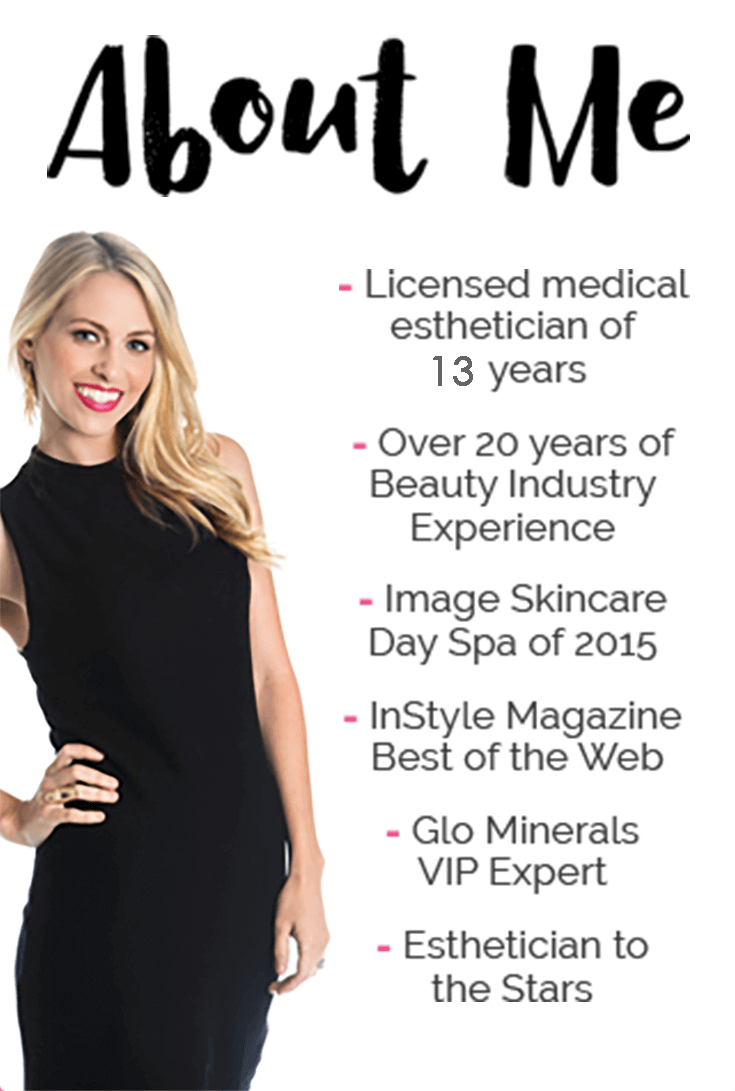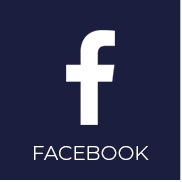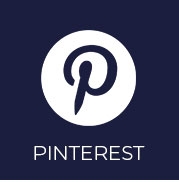What Should You Be Using In Your Skin Care Routine?
Take my quiz and get personalized recommendations from a
licensed esthetician!
Are Your Favorite Beauty Brands Connected? Read This to Find Out
It’s been a busy year in the cosmetics industry, beauties!
A handful of mega-conglomerates still sit at the top of the industry food chain.
No change there.

Let me give you the quick lay of the land.
Powerhouse corporations like L’Oréal have been busy of late.
Just a few years ago, L’Oréal built its largest factory ever in Indonesia and immediately started construction on another in Mexico.
Talk about expansion!
Clearly, the company was gearing up for major growth overseas, and the opening of new markets in places like Asia and the Middle East.
And now, that growth is well underway.
Meanwhile, some of the biggest industry players – like Procter & Gamble, Estée Lauder, L’Oréal, Mary Kay, Unilever, and Johnson & Johnson – have been gobbling up small indie companies.
Remember that “indie beauty” refers to those beauty brands that are independently owned, operated, and funded and remain unattached to large corporate entities.
In practice, these brands are often purpose-driven, customer-centric, small-scale companies, fueled by a passion for their niche, and usually founded by one or two people.
Estée Lauder has been an especially busy bee, buying up small brands to appeal to the millennial market, and expanding like crazy in China.
That's just this quarter.
At some point, the term “mega” doesn’t cut it anymore.
"Ultra-mega" is probably a good substitute.
With smaller indie brands being consumed under giant umbrellas, there’s a lot of image adjusting going on.
Shopping according to your values can be a challenge when things move this quickly.
Plus, it further complicates the picture when large beauty brands sometimes come disguised as indie.
Here's an example: Back in June, Deciem founder Brandon Truaxe sold a stake in his company (parent to a dozen smaller brands including The Ordinary and NIOD) to Estée Lauder.
Referring to the new partnership, he wrote, “We have felt like family from the very first day.”
It was a great sentiment, but to be clear, Estée Lauder has grown since the founder’s early days.
The company now have somewhere around 32,300 employees.
It also purchased makeup brand Too Faced for a cool $1.45 billion, and then shelled out another $230 million for their competitor, Becca.
With so many numbers in the billions like those, a couple of questions spring to mind:
Do your buying dollars really have power?
And, as consumers, how do we navigate what are definitely fast and furious waters in this industry right now?
Don’t worry. I have some answers!
But first, let’s step back and take a look at how we got here.

Some History
Even the big guys had to start somewhere:
- L’Oréal (brands Maybelline, Lancôme, and SkinCeuticals, among others) was created in 1909 by the chemical engineer, Eugene Schueller, who also invented the first hair-dye formula. Smart man!
- Estée Lauder was mixing up formulas in her kitchen when she was in high school and launched the makeup business with her husband in 1946. While Lauder herself created brands like Clinique and Origins, others like Bobbi Brown and Tom Ford were brought in much more recently.
- Procter and Gamble goes way back to 1837 and a pair of brothers-in-law – one a candle maker, the other a soap maker. Their big break came when they were hired to supply soaps and candles to soldiers during the Civil War. The company was officially incorporated in 1905.
- Coty had its start as a parfumier in Paris in 1904.
- Shiseido began as a Western-style pharmacy in Tokyo in 1872.
Humble beginnings with some pretty staggering results!
Fast forward to somewhere around the turn of this century.
Everything changed with the explosion of the Internet.
As consumers, we became savvy and curious about how our products were actually made.
With so much information becoming available at the touch of a button, we became increasingly determined that our shopping should align with our values.
Hello, social media! Goodbye, passive consumption.
We could express ourselves through the choices we made online.
And, as cosmetics and skincare enthusiasts, we took it to the next level.
Indie beauty was really born at that convergence of information, choice, self-expression, and value.
Brands sprouted up, finding shared connections with like-minded shoppers based on values and a deep commitment to quality ingredients.
As it took the industry by storm, the mega-conglomerates took notice.
For example, chemical conglomerate Clorox bought out natural brand Burt’s Bees in 2007 for $970 million.
You're probably thinking, "What do bleach and lip balm have in common?"
Well, according to Clorox, "The acquisition of Burt's Bees is strongly aligned with Clorox's Centennial Strategy to pursue growth in areas aligned with consumer 'megatrends' in health and wellness, sustainability, convenience and a more multicultural marketplace."
Basically, Clorox wanted to be perceived as more "green" and "sustainable" in order to boost sales.
Indie beauty had grabbed up a big enough percentage of the market for beauty giants to want a piece of the pie.

Consumers still continued to demand high-quality, effective ingredients in their cosmetics, which led to the next movement.
The fastest growing niche in the industry today is “cosmeceuticals” (cosmetics + pharmaceuticals) - products with proteins, vitamins, peptides, enzymes, and antioxidants in ingredients.
The big companies have jumped on this demand energetically.
Avon pulled itself out of a financial bind with some cosmeceutical-sounding marketing for new products – Anew Clinical PRO Line Eraser Treatment is one.
The big front-runners in this niche are Estée Lauder's Aveda and Origins, and Shiseido’s Bare Escentuals.
In terms of patented formulas, Avon owns around 100 patents, while L’Oréal now has 600.
The cosmeceutical niche continues to grow daily.
That brings us up to speed and back around to a couple of questions.
Keep on reading!
Do Your Buying Dollars Still Have Power?
My short answer is yes.
Information really is power, and that’s one thing we’ve got!
And, we shouldn’t underestimate our ability to use it.
The beauty industry really is a case in point in many ways.
For years now, we’ve been doing our research, buying products with a conscience, and putting our values to work in the marketplace.
You shouldn't be in the dark when it comes to your skin.
By now (and hopefully with my help), you’ve gotten very specific about the ingredients you want on your skin and those you don’t.
The mega-brands took notice; they bought up and poured resources into indie brands who had built a relationship of trust with their customers.
You want to be educated about what goes on behind the scenes, what company owners believe in, and the science behind the products that work.
You used your voice, and they had no choice but to listen. Go you!

Next question:
As Consumers, How Do We Navigate the Fast and Furious Waters of This Industry Right Now?
This is an important question for reasons of trust and transparency, among others.
It's hard to keep up with everything that's going on, and things can get confusing quickly.
Can you trust a mega-corporation to take the same care of their ingredients that indie brands do?
How do you stay true to your values when it’s hard to follow who owns what and who makes their products where?
These aren't easy questions to answer, and with everything moving so quickly, it’s even harder to keep up and distinguish between a marketing image and the truth.
Let me share with you my formula for navigating these tricky waters.
I wholeheartedly recommend you approach your skincare shopping with a few simple rules:
- don’t sacrifice your health
- don’t sacrifice your values
- looking and feeling great as a priority
- using products that are effective and deliver results
If you follow these, and maybe have an esthetician guide you along the way, I don’t think you’ll go wrong.
Does It Really Matter Where You Get Your Products? Is There Really a Difference?
The stories of startup independent brands today can be as impressive and inspiring as the first days of Estée Lauder in her kitchen lab.
I've talked with founders of other skincare lines, and we tend to have a few things in common.
We tend to have a vision and back it up with the drive to find the perfect ingredients.
We hand-make our formulas and often hand-pick our ingredients.
In an $84 billion industry largely ruled by a handful of companies, it's hard to stand out on advertising power or expensive campaigns.
We must stand out through our commitment to quality, our faith in our products, and our personal experience.
In many cases, our families are connected to the business, and we put our whole selves into giving our customers what they need and love.
On the other hand, brands under those huge umbrellas, like P&G and L’Oréal, have years of history and experience and can have some solid science behind their formulas.
All those expensive patents can pay off with real results, and some of the advanced formulas in a mega-brand’s high-end lines can trickle down to their more affordable ones.
Ingredients tend to be shared for better and for worse.
They certainly can afford ongoing advertising campaigns and even celebrity endorsements.
The differences are yours to consider, and the choice is yours to make.

Credit: imgur.com
The Big 6
Remember, information is power.
In that spirit, I decided to do a little digging.
You can see some of "the Big 6" companies in the cosmetics industry in the image above.
It's fascinating to me that food, clothing, medicine, home, cosmetics, personal care, and even pet care brands are intertwined.
It's all more complex than you think.
Let’s take a closer look at the Big 6 companies and what we know about them right now:
Procter & Gamble
The company’s top 3 officers paid themselves a total of about $25 million last year.
Non-beauty brands it owns include Tide detergent, Gillette razors, and Pampers diapers.
In 2015, their beauty, hair, and fragrance businesses brought in a combined $5.9 billion in sales.
In 2016, it got rid of many of its beauty brands (52 of them) by selling them to Coty.
The complex deal left stockholders with a 52% share in Coty.
This deal also affected 3 factories in the US and about 10,000 workers.
It included brands Max Factor and CoverGirl. The brands P&G kept on include Olay.
The company recently spent $100 million in an attempt to keep billionaire hedge fund manager Nelson Pelz off their board.
Estée Lauder
The company brought in $3.27 billion in their first quarter this year.
Last year, the top three Estée Lauder executives paid themselves a combined $42 million.
Beauty brands include GLAMGLOW, Bumble and Bumble, Smashbox, Prescriptives, Lab Series, Origins, Bobbi Brown, Tom Ford, and Aveda.
In November of this year, the company announced plans to partner with Google through Google Assistant on Google Home to offer “personalized consumer beauty experiences via the emerging world of voice activation.”
Cool! From what I gather, the app will walk you through skincare-application techniques, for starters.
This company operates in over 150 countries around the world.
L’Oréal
This is a French company with headquarters in Clichy, Hauts-de-Seine, and offices in Paris.
It’s valued at close to $12.5 billion.
It owns beauty brands Maybelline, Lancôme, SkinCeuticals, Urban Decay, Paloma Picasso, and NYX Cosmetics, among many others.
L’Oréal bought indie brand It Cosmetics in July for $1.2 billion, right after acquiring Atelier Cologne in June.
They came under a bit of fire recently for a Colorista hair dye in purple that turned buyers’ hair green. Yikes!
They acquired The Body Shop in 2006.
Shiseido
Known as one of the oldest cosmetics companies in the world, Shiseido brands include Avene, d Program, Integrate, Aupres, Elixir, Playlist, NARS, and Bare Escentuals.
The company is based in Japan.
It sold its Carita and Decleor brands to L’Oréal in 2014 for $312 million.
Unilever
This company operates around 710 factories and warehouses in 70 countries.
Non-cosmetic brands they own include Country Crock, Hellmann's, Dove, and Axe.
Skincare brands include Dermalogica, Murad, Kate Somerville, and Ren.
Last year the company brought in nearly $64 billion.
This Dutch-British conglomerate is based in Rotterdam and London.
Johnson & Johnson
This company has healthcare, pharmaceutical, and consumer divisions.
It owns Stayfree, Sudafed, Zyrtec, and Listerine, to name a few.
Skincare brands include Clean & Clear, Neutrogena, RoC, and OGX.
The company is headquartered in New Jersey and operates worldwide.
The top 3 officers paid themselves over $41 million last year.
Their drug, Darzalex, has recently had stellar results in treating multiple myeloma.
There’s a quick rundown on some of the biggest players in this industry today and for the foreseeable future.
“Knowledge is power” is becoming my new mantra!
Whatever you hope to achieve from your skincare products, I hope you’ll continue to join me as we uncover the facts.
There’s no one-size-fits-all here.
If you’re anything like me, options make you happy.
But, the more we know, the more likely our shopping choices will align with our greater purpose.
Final Thoughts
I hope you learned something new today!
Mega-corporations shouldn't invoke fear; rather, I want you to be informed and prepared for your next shopping trip!
Whether it's made by an indie brand or one of the big guys, if a product works, makes you look and feel fantastic, and gives value for what is paid, sometimes that makes it exactly the right product.
You shouldn't feel guilty about what works for your skin's specific needs.
This is something I've embraced with my own skincare line.
I recommend trying my All Skin Types Set!
I promise to offer the highest-quality products that will cause you to look and feel beautiful and to keep you informed along the way.
Have you ever been surprised to find out that one of your favorite “small” brands was actually part of a giant corporation? Did it affect your buying decision? Did it affect the way the product made you feel or look? Let’s talk in the comments!
Top Brands
New Brands

Recent Posts

Are You Taking the Right Steps to Care for Your Skin?
Take the Quiz
Skincare Secrets!
10-step guide for healthy, beautiful skin after kids.
100% privacy. I will never spam you!














